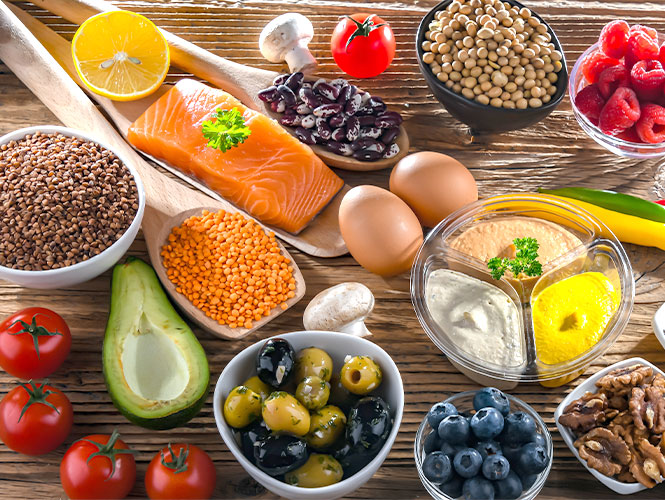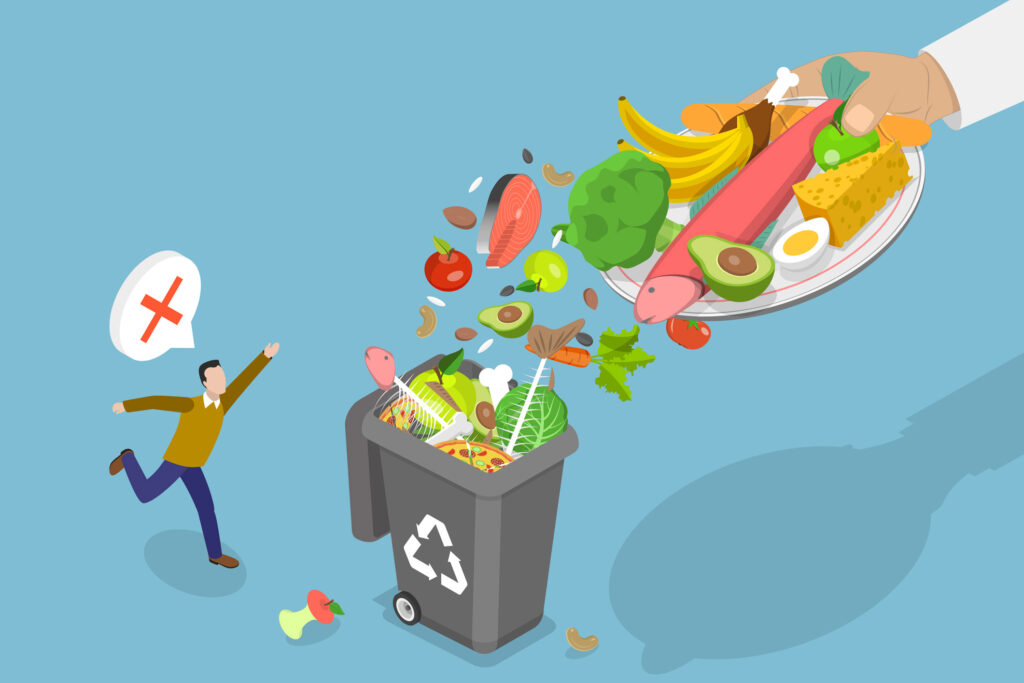Eating healthy on a budget isn’t about giving up the foods you love — it’s about making smart, intentional choices. Whether you’re feeding a large family or cooking for one, you can make nutritious meals without overspending. Planning ahead is key: start by creating a weekly meal plan based on what’s in your pantry, what’s on sale, and what’s in season. This helps minimize waste and ensures every item you buy has a purpose. Stick to a grocery list and avoid impulse buys, especially processed snacks and sugary drinks that add cost without nutrition.
Stock your kitchen with affordable staples like rice, beans, lentils, oats, eggs, frozen fruits and vegetables, and canned goods. These ingredients are not only inexpensive but also versatile and packed with nutrients. Buying in bulk, choosing store brands, and shopping at discount stores or local markets can stretch your dollars even further. Cooking at home more often allows you to control ingredients and portion sizes while saving money on takeout.
With a little strategy and creativity, healthy eating becomes both affordable and enjoyable. This guide offers practical tips to help you eat well, save money, and make every meal count — no matter your budget.
Why Healthy Eating Matters

Healthy eating does more than just support your physical health — it powers your entire well-being. A balanced diet fuels your body with the nutrients it needs to function at its best, boosting your immune system and helping to prevent chronic illnesses like heart disease, diabetes, and obesity. But the benefits go beyond the physical. Nutritious foods also enhance mental clarity, improve focus, and provide steady energy throughout the day, unlike the highs and crashes from processed or sugary snacks. Eating well can even support emotional balance and a better mood. When you nourish your body with wholesome foods, you’re investing in long-term vitality, resilience, and a more energized, clear-minded version of yourself — every single day.
The Budget-Healthy Connection
Contrary to popular belief, eating healthy doesn’t have to cost more — it’s all about how you approach it. The real savings come from a few smart habits that make a big difference over time.
Start by choosing whole, unprocessed ingredients like grains, beans, fresh or frozen vegetables, and lean proteins. These items are often much cheaper per serving than pre-packaged or fast food options, and they’re far more nutritious. Cooking meals at home gives you full control over what goes into your food and helps you avoid the high markup of restaurant meals.
Planning your meals ahead of time and making use of what you already have can help reduce food waste — one of the biggest hidden costs in most households. By being intentional with your shopping and using ingredients efficiently, you can create healthy, satisfying meals without going over budget. These small, consistent actions not only improve your diet but can significantly lower your grocery expenses in the long run.
- Choosing whole ingredients
- Cooking at home
- Reducing food waste
- Planning ahead
These actions not only support your health but significantly cut grocery bills.
Smart Shopping Starts With a Plan
📝 Meal Plan Like a Pro
Planning your meals each week does more than just keep you organized — it helps reduce decision fatigue, making your daily routine less stressful. When you already know what you’re going to eat, you eliminate the constant “What’s for dinner?” dilemma, which can drain your energy and lead to impulsive choices. Without a plan, it’s easy to fall into the habit of grabbing fast food or ordering expensive takeout just for convenience.
By setting aside a little time each week to plan meals and create a shopping list, you make it easier to stick to healthier options and avoid last-minute, less nutritious choices. It also helps you make the most of what’s already in your pantry or fridge, reducing waste and saving money. Over time, this simple habit not only supports better health but also streamlines your week and puts you back in control of your time, budget, and nutrition.
Tips:
- Plan meals based on weekly sales to save money.
- Choose recipes with ingredients you can use in multiple dishes.
- Use a digital or printable planner to stay organized.
📋 Make (and Stick to) a Grocery List
Impulse purchases are one of the biggest threats to your budget. When you walk into a store without a clear plan, it’s easy to be swayed by promotions, eye-catching displays, or cravings for items you don’t need. These unplanned purchases can add up quickly, leaving you with a much higher grocery bill than intended.
A well-organized shopping list helps you stay focused and avoid these temptations. By sticking to a list of only what you need, you’ll save money and time. It ensures you buy what’s essential, preventing unnecessary items from sneaking into your cart. This simple strategy helps you shop more efficiently and keeps your budget on track.
Pro Tip: Categorize by store section to speed up shopping.
Best Budget-Friendly Foods

Eating on a budget doesn’t have to mean sacrificing nutrition or flavor. In fact, there are many affordable pantry staples and fresh foods that provide excellent nutritional value without breaking the bank. By choosing the right ingredients, you can create balanced, healthy meals that are both cost-effective and nourishing.
Staples like beans, lentils, rice, oats, and pasta are not only inexpensive but also packed with essential nutrients. Fresh produce like seasonal vegetables and fruits, as well as frozen options, offer a great variety of vitamins and minerals at a fraction of the cost of processed foods. By making strategic choices at the grocery store, you can enjoy a diet that’s both affordable and rich in nutrients.
- Grains: Brown rice, oats, whole wheat pasta
- Legumes: Lentils, chickpeas, black beans
- Vegetables: Carrots, cabbage, potatoes, frozen veggies
- Fruits: Bananas, apples, oranges (buy in bags!)
- Proteins: Eggs, canned tuna, tofu, peanut butter
Cooking at Home: Where the Savings Happen
🍳 Embrace the Power of Cooking
Home-cooked meals are typically more affordable and healthier than dining out at restaurants. When you cook at home, you can control the ingredients, portion sizes, and cooking methods, ensuring that your meals are both nutritious and tailored to your preferences. Restaurants often include hidden costs, such as higher prices and the use of excess fats, sugars, and sodium. By preparing your own meals, you can buy ingredients in bulk, use leftovers creatively, and avoid unhealthy additives. This not only saves money but also allows you to make better, healthier choices that align with your nutritional goals.
Quick, Healthy Meal Ideas:
- Veggie stir-fry with rice
- Lentil soup and toast
- Egg and veggie scramble
- One-pot pasta with canned tomatoes and spinach
🧑🍳 Batch Cooking = Budget Wins
Making meals in bulk and freezing individual portions is a great strategy for saving both time and money. By preparing larger batches of food, you can reduce waste by using up ingredients you already have, and you’ll always have healthy meals ready to go when you need them. Freezing portions also makes it easy to enjoy home-cooked food throughout the week without the effort of cooking every day. This practice helps you avoid the temptation of takeout, which can be expensive and less nutritious. Plus, it allows you to have a variety of homemade meals on hand, ensuring that you stay on track with your budget and health goals while minimizing food waste.
Examples:
- Chili (bean or meat-based)
- Curry with chickpeas and rice
- Baked casseroles
Snack Smart Without Spending Big
Pre-packaged snacks may be convenient, but they tend to be both costly and less healthy compared to homemade alternatives. These snacks often come with a higher price tag due to the convenience factor, and they are typically loaded with added sugars, unhealthy fats, and artificial ingredients. While they can be a quick solution for hunger, they don’t offer the same nutritional value as fresh, homemade options. Preparing snacks at home, like portioning out nuts, chopping fruits and vegetables, or making your own granola bars, is not only more affordable but also a much healthier choice, allowing you to control the ingredients and avoid unnecessary additives. Try these instead:
- Hard-boiled eggs
- Carrot sticks with hummus
- Apple slices with peanut butter
- DIY trail mix
- Popcorn (buy kernels, not bags!)
Reduce Waste and Save More

Wasting food is essentially wasting money. Every time ingredients go unused or leftovers are tossed, you’re throwing away hard-earned cash. Instead of letting food go to waste, get creative with what you already have in your pantry or fridge. Look for ways to repurpose leftovers into new meals or find recipes that use up ingredients that might be on the verge of spoiling. Not only does this reduce waste, but it also helps stretch your grocery budget further. Whether it’s turning extra vegetables into soups or transforming stale bread into croutons, there are countless ways to make the most of what you’ve got and avoid unnecessary spending.
Zero-Waste Kitchen Tips:
- Freeze chopped veggies, fruits, and leftovers.
- Make broths with veggie scraps.
- Use wilting produce in soups, smoothies, or stir-fries.
Meal Prep Tips to Maximize Your Budget

📦 Meal Prep Like a Boss
Spending an hour or two on Sunday preparing meals can save you money throughout the entire week. By batch cooking and organizing your meals in advance, you can avoid last-minute takeout or expensive dining options. Prepping ahead ensures you have healthy, ready-to-go meals, which not only saves time during busy weekdays but also helps you stick to your budget. Try:
- Cooking grains in batches
- Pre-chopping vegetables
- Portioning snacks in containers
🥗 Reuse Ingredients Across Meals
Roasted chicken can be repurposed into tacos, soup, or used as a topping for salads throughout the week. Similarly, beans are versatile and can be added to stews, wraps, or rice bowls, making them an easy way to stretch meals and add variety without extra cost.
Sample 7-Day Budget-Friendly Meal Plan
Day 1:
- Breakfast: Oatmeal with banana and cinnamon
- Lunch: Lentil soup
- Dinner: Veggie stir-fry with brown rice
Day 2:
- Breakfast: Scrambled eggs with toast
- Lunch: Tuna salad sandwich
- Dinner: Baked potatoes topped with black beans and salsa
…Continue similar meals for Days 3-7
Grow What You Can
Even a few homegrown items can cut costs. Start with:
- Herbs: Basil, parsley, cilantro (windowsill-friendly)
- Greens: Spinach, lettuce
- Tomatoes: Ideal for pots on balconies
Tech Tools for Budget Eating
🧾 Use Apps to Your Advantage
- Ibotta or Fetch: Earn cashback on your grocery purchases.
- Mealime or Paprika: Simplify meal planning and discover new recipes.
- Flipp: Access digital coupons from local stores to save on your shopping.
Mindset: Long-Term Health, Not Perfection
Focus on progress, not perfection. Instead of aiming for a flawless diet, strive for consistency. It’s about making small, sustainable improvements over time rather than stressing over every meal. A balanced, consistent approach is far more effective in the long run than trying to follow a strict, perfect diet that’s difficult to maintain. Consistency allows you to build healthier habits gradually, making it easier to stay on track and see lasting results.
🍽️ Focus on 80/20
If 80% of your diet is nutritious, the occasional treat won’t hurt — or wreck your budget.
Final Thoughts
Eating healthy on a budget isn’t about denying yourself the foods you enjoy — it’s about making empowered choices. By planning your meals in advance, you can take control of your diet and finances, ensuring that you eat nutritious food without overspending.
Smart shopping is key to sticking to your budget while still filling your cart with healthy, whole ingredients. Focus on seasonal produce, bulk items, and affordable staples like beans, grains, and frozen vegetables, which provide great nutritional value at a lower cost.
Cooking at home is another powerful way to save money while eating well. When you prepare meals yourself, you control the ingredients and portion sizes, making it easier to create balanced meals. With a little effort, healthy eating becomes not only more affordable but also incredibly satisfying, helping you feel good about what you eat and how it benefits your body.
FAQs
How can I eat healthy without spending too much?
Plan your meals, buy in bulk, and choose affordable staples like beans, rice, and frozen vegetables. Cooking at home saves money and ensures nutrition.
What are some budget-friendly foods to stock up on?
Grains like rice and oats, legumes such as beans and lentils, seasonal produce, eggs, canned goods, and frozen vegetables are all nutritious and affordable.
How can meal planning help save money?
Meal planning reduces impulse buys and food waste by ensuring you only buy what you need. It also lets you make the most of ingredients you already have.
What are some quick, healthy meals on a budget?
Try simple dishes like veggie stir-fries with rice, lentil soup, scrambled eggs with toast, or one-pot pasta with canned tomatoes and spinach.
How can I reduce food waste to save money?
Repurpose leftovers, freeze extra portions, make broths from veggie scraps, and use wilting produce in soups or smoothies to avoid waste and save money.


